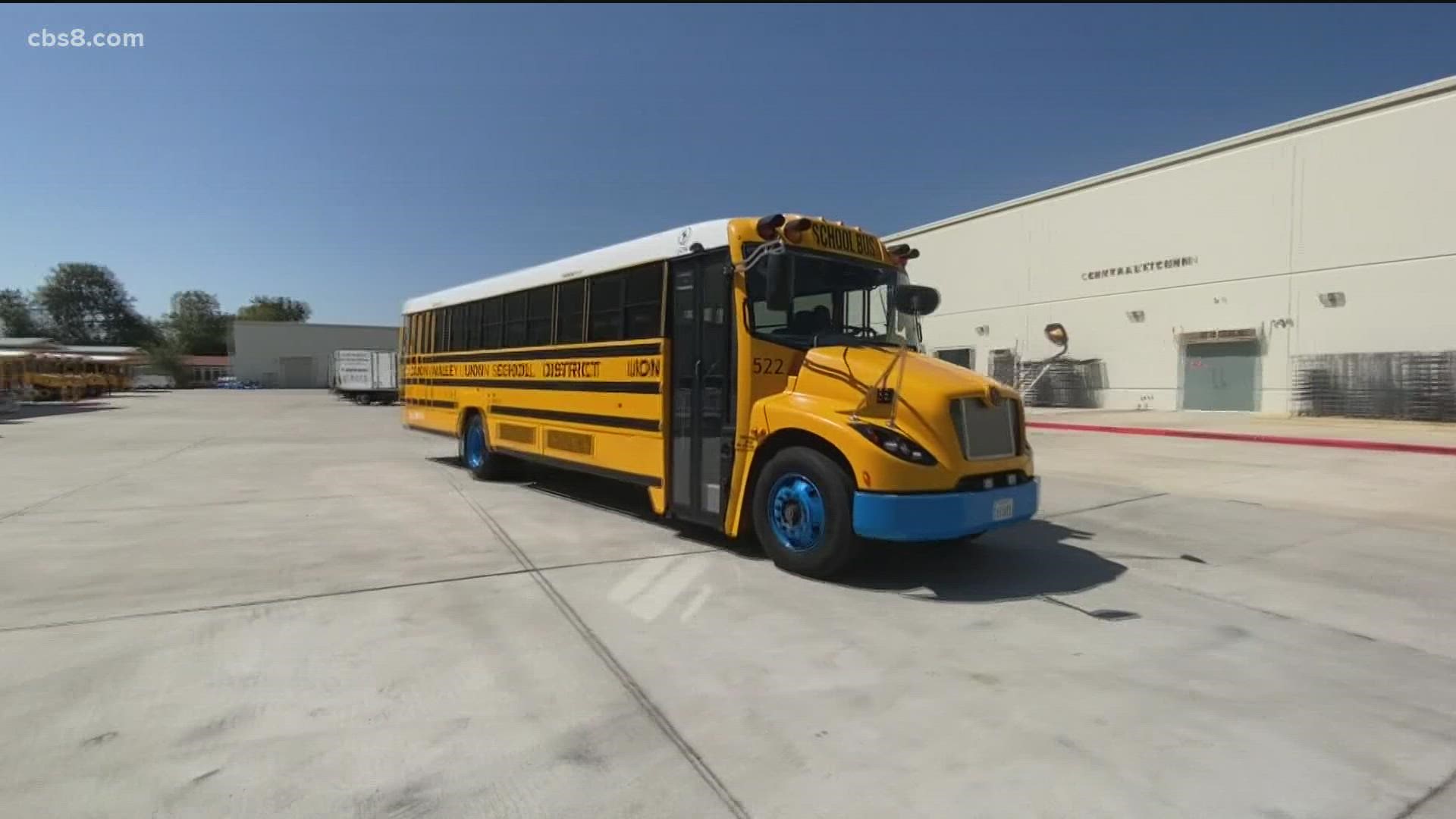EL CAJON, Calif. — In the Cajon Valley Union School District, six new battery-powered school buses have joined the fleet as part of a pilot program in partnership with SDG&E and Nuvve. The buses ditch typical diesel and instead provide a source of renewable energy that decreases tailpipe emissions and can even provide a source of revenue to the district by returning the renewable energy back to the power grid.
The Director of Transportation for the district says that while it took some getting used to, their drivers now want these types of buses on their routes.
“I’m an old school bus driver. We drove dirty diesel vehicles and I was really against this technology when it first came out because I did not think it was going to meet the needs of this industry," said Tysen Brodwolf. "But as it progresses, it gets better and better, the mileage increases, so honestly it's made a believer out of me.
The six electric buses were paid for through federal and state grant money, and while they can be expensive, they’re also bringing in revenue of their own. After running their normal route, that remaining battery power can be sold back to the power company for profit.
“Vehicle to grid technology is exciting because it brings this new revenue opportunity for electric vehicles which is first of its kind and that is in the thousands of dollars per bus per year," says Russell Vare, the Director of Automotive Partnership for Nuvve. "That revenue can go back to the school district; it can also be used to drive down the cost [of future electric buses] and make it really competitive with diesel as a form of transportation.”
Nuvve is the company that creates the software needed for the vehicle to grid or "V2G" technology. Vare says as the cost of building these buses goes down, their technology makes electric buses competitive with traditional gas-powered buses. When the energy is returned to the power grid, the revenue the district makes can be used to offset the cost of future buses or battery replacements.
“School buses were identified early on because of their normal use pattern," said Jeff Venegas, Project Manager at Nuvve. "Because they sit generally 90% of the time, they’re a great candidate for a battery storage unit. When they're parked and idle, the energy can be moved back and forth if the grid needs it."
That "battery storage unit" that the buses double as is also a benefit to power companies like SDG&E in that they can add renewable energy to the grid, they can lessen the stress on the grid during peak hours, and they can even be used as portable energy units in the event of emergencies or blackouts. The power in the six buses can provide power to up to 80 homes. The portable and stored energy can be especially helpful in the evening and overnight hours after solar energy fades away, continuing to provide renewable energy to the grid during peak hours.
Because these buses are battery-powered, maintenance is also significantly reduced.
“These are basically drive-and-go vehicles," Brodwolf said. "The maintenance goes down tremendously. We're not changing oil, we're not going through brake pads as much, there are very little fluids. We're seeing decreased cost in terms of maintenance on these vehicles.”
She went on to say, "All of our drivers want these buses on their routes."
Other school districts are beginning to hop on board, switching out diesel for electric power. Nuvve and SDGE say they’re here to partner with them, helping to build a more resilient power grid and clean up the environment along the way.
WATCH RELATED: Cajon Valley School District Superintendent shares how they have safely reopened

